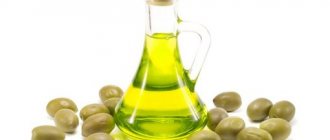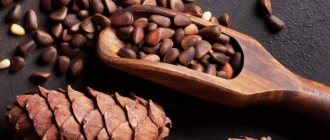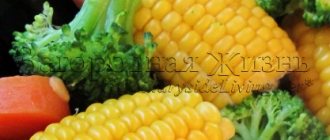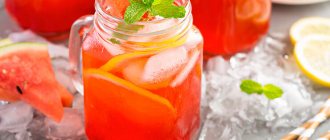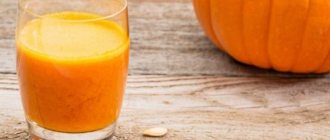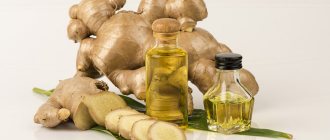In the summer, many people feel uncomfortable, and overweight people suffer doubly. Not everyone decides to simplify their diet, at least temporarily, but interest in cold drinks and ice cream is sharply increasing. This “cooling” provokes thirst and weight gain: it becomes even more difficult to bear the heat and all that remains is to pray: “it will soon be autumn.”
But you can admire it “to the fullest”, paying tribute to the juicy and fragrant fruits that ripen at this time - summer fruits. The selection of fresh fruits in the summer is very large: it seems that some have just ripened, and others are already “following” them.
What are the best summer fruits? Of course, local ones, which ripen in their own season and immediately go to markets and stores.
Summer Fruits: Common and Available Fruits
“sunny” apricots will ripen already in May, in the southern part of Russia and the Caucasus. Rich in carotene and ascorbic acid, minerals and beneficial acids. Any fruit is a “treasury of values”, and we will not describe the composition of each in detail here. Apricots are good for eye health and immunity, help the functioning of the nervous and endocrine systems, improve memory and “feed” the intestinal microflora. Their frequent consumption helps to avoid anemia - including for pregnant women and children; strengthens bones and blood vessels; normalizes stomach acidity. In the last few decades, we have learned to grow apricots, like peaches, even in regions with a harsh climate, so they cannot be called inaccessible or rare.
Peaches are juicier and sweeter; ripen somewhere at the same time and are useful for the same diseases, help relieve stress and improve digestion, rejuvenate the skin. If you “honestly” eat them all summer (you can collect them until October), wrinkles will smooth out and liver spots will fade (or disappear). Instead of the regular barbecue, try grilled peaches with cream cheese and walnuts at a picnic: your body will be grateful. Fruit halves are stuffed with a mixture of cheese and nuts (the seeds have been removed), but first of all, these halves are fried for 3-4 minutes on a wire rack, flesh side down. Turn over, add the filling and fry on the other side for another 3-4 minutes. It is suggested to drizzle with honey, but peaches are sweet without it.
Nectarines are the hairless “brothers” of peaches, but are otherwise very similar to them. In most cases, they are smaller in size, but richer in potassium, carotene and vitamin C: their antioxidant effect is more pronounced. You can purchase them from the very beginning of June until the very end of September; Ripe nectarines have elastic, smooth skin, a reddish-brown color, and a sweet and persistent aroma.
At the same time, sweet and soft pears, rich in tannins and pectin, ripen: 1-2 pears throughout the day, and the intestines and liver, kidneys and thyroid gland will work perfectly, cholesterol will improve; hair, skin and nails will say “thank you”. Pears are good for diabetes, especially the mildly sweet varieties: they help reduce blood sugar. A wonderful salad for various types of diabetes and obesity: cut pears (100 g) and apple (50 g) into cubes, mix with chopped boiled beets (100 g), pour over lemon juice and low-fat sour cream, sprinkle with chopped herbs.
Where there are pears, there are apples; more precisely, we have more apples: many varieties are grown in different regions, and many are also imported - they are easy to store and transport. By the way, imported apples appear earlier: in the Russian Federation there are few first varieties - it was simply not customary to grow them - and only a few ripen in July, towards the end. Apples from the beginning of August are also considered early. The benefits of apples are widely known: filled with vitamins, minerals, amino acids, pectin, flavonoids and fiber, they protect against hypovitaminosis, heart disease and anemia, hypertension and brittle bones, and their use in healing patients can be claimed for a long time. A wonderful snack is apple sandwiches: cut a ripe apple into thin circles, spread one circle with peanut butter, sprinkle with ginger (cinnamon), cover with another circle. It’s tasty, healthy and everything is normal: there are few calories and the glycemic index is low.
When do summer vegetables and fruits ripen?
When the harvest , you can kill two birds with one stone: you can save money and get a high-quality product. The first vegetables and fruits are good for their composition, and since we do not exist separately from the natural balance, our body truly needs them precisely when they are ripe.
Fruits and vegetables in June

June cherry
From the point of view of obtaining useful substances, June is the richest summer month. It is opened by the first cherry tree , rich in copper. Copper is involved in the body's production of collagen, and the first beauties know what this means: goodbye to skin aging.
The June sun is very deceptive, and the still cool breeze has no effect on the fact that it burns skin that is not accustomed to the light. The berry promotes the production of melanin , and the skin more easily tolerates the effects of sunlight. Using cherries as an example, it is easy to see that each product has its own place in the calendar.

June salad
Greens, greens and more greens. From the first months of spring, the season does not stop, but in June it is no longer spinach. Stock up on parsley, dill, and onions. It's time to chop the greens for the winter and put them in the freezer.
June carrots
Sweet young carrots are very rich in vitamin A, while the juice from them energizes and perfectly quenches thirst.

June strawberry
Many people have been waiting for this moment since the fall: when strawberries are no longer sold at the price of tropical fruits, when they become soft, sweet, aromatic and, most importantly, their own. The berry is very useful for memory and strengthening the immune system. Strawberries are also rich in antioxidants - just what you need for homemade cosmetics!
June radish
Those who want to quickly get rid of the kilograms gained over the winter will be pleased to know that radishes will become a faithful ally in the fight against excess weight . It removes toxins from the body, prevents the formation of edema and stimulates the body to consume fat reserves rather than deposit them.

June turnip
Turnip salads are one of the healthiest and lowest-calorie salads. It contains a lot of vitamin C, more than citrus fruits, so June is a good time to boost your immunity.
AUGUST: SEASON OF VEGETABLES, FRUIT AND BERRIES
While there are still warm, sunny days outside, our body needs light, low-calorie and at the same time tasty dishes. In the last month of summer, the diet must include ripe seasonal vegetables, fruits and berries, rich in vitamins and energizing.
Why now?
From early childhood we were told that eating fresh vegetables and fruits is very healthy, because they saturate the body with vitamins and minerals. This statement is true, but few people know that they are useful only in their season. Seasonal fruits that ripen exactly on time and according to their natural cycle will bring maximum benefits to the body. They can be safely consumed in their raw form and not be afraid that the body will suffer from them. In supermarkets you can find different products at any time of the year. Therefore, many people do not think about the benefits of vegetables, fruits and berries that are grown right now. And in vain, studies have repeatedly confirmed the benefits of seasonal products. They ripen without adding nitrates, pesticides or unnecessary fertilizers. Such vegetables, fruits and berries are delivered mainly from the regions closest to the buyer; they do not need to be treated with protective synthetic wax, increasing shelf life.
What appears in abundance on the markets in August?
Vegetables
Eggplant
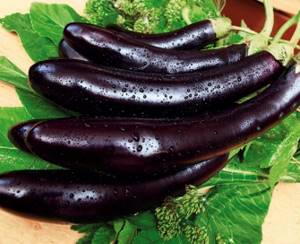
Eggplant is a popular summer vegetable. They can be used to make amazing seasonal dishes or can be preserved for the winter. In August, we have a unique opportunity to buy fresh, natural local eggplants, completely different from those we see on supermarket shelves all year round.
Choose fruits with thin, dark blue (almost black) skin. All the beneficial substances of this vegetable are contained in the skin, so it is better not to cut it off when preparing certain dishes.
It contains few calories and a lot of fiber, as well as calcium, magnesium, sodium, potassium, phosphorus, iron, vitamins B1, B2, B5, PP. The last one is nicotinic acid, which is why eggplant is useful for those who want to quit smoking: the vitamin reduces the craving for cigarettes.
Zucchini, zucchini, squash
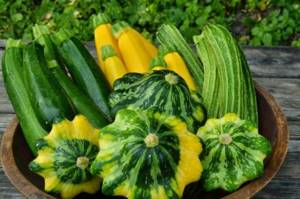
August is the season for pumpkin’s “brothers”: zucchini, squash and zucchini. These products are easily absorbed by the body (they contain less coarse dietary fiber), so they are suitable for small children and people with digestive disorders. They are rich in carotenoids, zeaxanthin and lutein, which help maintain vision and prevent the development of cataracts. Pumpkin vegetables are low in calories, so include them in your diet to maintain or lose weight.
Carrot
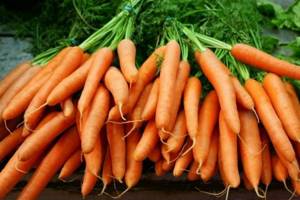
These are fresh, beautiful carrots from Russian fields and vegetable gardens. In addition to the benefits for vision, the vegetable maintains the beauty of the skin due to its high content of vitamin A. It is better absorbed with fats, so add Greek yogurt or sour cream to the carrot salad. Eating carrots that are in season can also help fight inflammation. A 2020 study confirms that eating one carrot daily reduces the risk of sudden heart attacks in older adults by almost 60%.
Cucumber
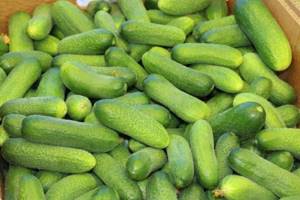
In August, cucumbers do not disappear, but rather appear in abundance. This is still the season of the famous Lukhovitsky, medium-fruited ones.
The vegetable consists of 95–97% water, but contains many useful substances: vitamins B1, B2, B3, A, C, calcium, iron, folic acid and magnesium. It contains gallic, coumaric, cinnamic and caffeic acids - strong antioxidants. Cucumbers, of course, will not cover the daily need for these substances; they simply cannot be eaten in such quantities. There is practically no sugar in cucumbers, and the calorie content of one vegetable is approximately 1% of the daily value.
Tomato
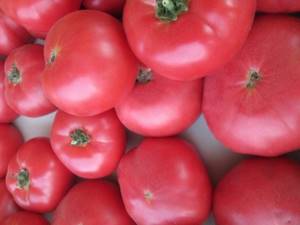
Choose pink varieties from Orenburg and Krasnodar, buy small, neat and very tasty cherry tomatoes on branches that are brought from Rostov. Appearance and smell are the main criteria by which to judge the freshness and quality of tomatoes. There is practically no fat in the tomato, the calorie content is about 1% of the daily value, and the sugar content is 3%. This vegetable is rich in lycopene, a substance that protects against cancer. Summer tomatoes are especially tasty, they have a bright aroma and juicy pulp, while in winter you can buy almost tasteless “plastic” analogues. Interestingly, lycopene is not destroyed during heat treatment, so you can eat tomatoes either fresh or adding them to any dish - from borscht to baked goods.
Radish
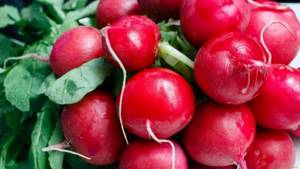
Fresh radishes are sold almost all summer, and August is no exception. It contains glucosinolates, anti-inflammatory substances found in broccoli, as well as plenty of vitamin C, E and folic acid. This is a dietary product; radishes are low in calories and high in fiber. It is best to eat radishes 10–15 minutes after you have grated or cut them: during this time, active isothiocyanates are formed from glucosinolates. They are a powerful anti-inflammatory agent.
Beet
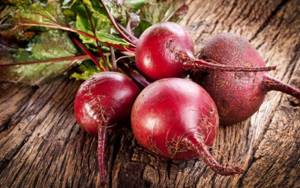
Ruby fruits will be in season until mid-October, but borscht is an out-of-season dish. By the way, betacyanin, a strong anti-inflammatory substance, gives them their color. Beets contain folic acid, vitamins B1, B2, P, C and PP, reduce cholesterol in the blood and help the liver fight toxic substances. Betaine in the vegetable reduces the risk of atherosclerosis, osteoporosis and Alzheimer's disease.
Bell pepper
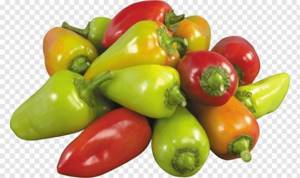
Sweet bell peppers from Rostov and Krasnodar appear on the market at the end of July. It makes excellent vegetable dishes, winter preparations and lecho. Choosing the right bell pepper is not at all difficult: the fruits should be undamaged, elastic (almost hard), and the skin should be clean. The tail of fresh pepper is always green, and the color of the peel is uniform. Nutritionists recommend eating this vegetable in salads or just like that, since heat treatment destroys up to 50% of the beneficial substances of bell pepper.
Fruits and berries
Plums
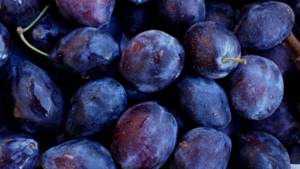
Deliveries of excellent “Moldavian prunes” will begin. This is the name of a variety of sweet, juicy and inexpensive plum. Speaking about plum varieties, one cannot fail to mention the Stanley variety. It has gained enormous popularity around the world, and prunes are now most often prepared from this variety. And just eating it is a pleasure. Blue, large, elongated fruits are great for processing, eating and look great at the market. Since childhood, we have heard about the benefits of plums for digestion, and this is true. Plums have a positive effect not only on metabolism, but also on the heart and blood vessels. So feel free to take it and implement it into your daily diet.
Peaches
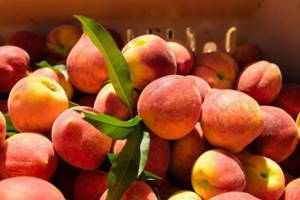
One of the most beloved seasonal fruits in August is, of course, sweet and juicy early peaches. They reach our markets from sunny countries: Armenia, Azerbaijan, Uzbekistan.
Ripe peaches must be tasty and smell strong. If you have the opportunity, be sure to ask to try and see the fruit in cross-section. Pink and white flesh is sweet, yellow flesh is more juicy and aromatic. Hard fruits, as a rule, are unripe, and overly wrinkled fruits are overripe (frightening flocks of bees hover around these peaches) or spoiled as a result of transportation. The peel may be slightly dented or damaged (just as the fruit itself may be slightly asymmetrical), but dark spots are a clear signal that rotting has begun.
Nectarines
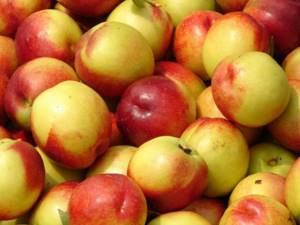
They are usually on shelves all year round, but it is in August that their prices drop. Particularly aromatic varieties of the new harvest from Uzbekistan are appearing in markets and supermarkets.
This fruit contains: vitamins (A, groups B, C, E, K); minerals: potassium, phosphorus, iron, calcium, magnesium, manganese, phosphorus, zinc; saturated, polyunsaturated and simple unsaturated fatty acids.
For a long time it was believed that nectarine was obtained through selective breeding. But over time, scientists found out that the fruit originated through the natural evolution of the peach in nature. It is believed that at some point the climate changed dramatically and the peach mutated in order not to die. Gardeners immediately appreciated the possibilities of new trees and fruits, and began to grow nectarines.
Apricots
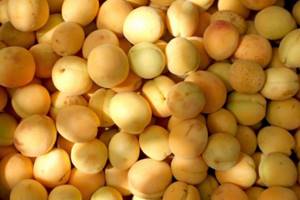
The best and sweetest apricots are brought to us in August from Armenia. The world-famous “Shalah” apricot (also called “Yerevan” or “Lemon”) has amazing taste, special juiciness and a pleasant aroma. The pit of such apricots is very easily separated from the pulp.
Juicy and sweet apricots are brought to our markets from the Krasnodar Territory: mid-August is the high season of this healthiest fruit.
It is difficult to list all the beneficial properties of apricot. This summer fruit is a real storehouse of vitamins and minerals. The fruits will be useful for people suffering from gastrointestinal problems. Due to the high content of phosphorus and calcium, the product is beneficial for bones. It also increases the level of hemoglobin in the blood and has a beneficial effect on memory and brain activity. Vitamin A in the composition helps improve vision.
Pears
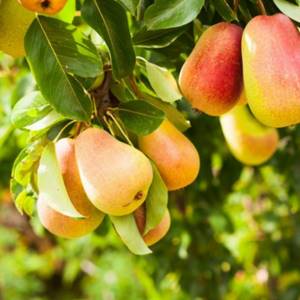
At the very beginning of August, the first sweet pears of the early harvest ripen in Azerbaijan, which immediately reach our market.
Fragrant pears are very sweet on their own and can be used as a dessert. Choose firm fruits with neat, intact skin.
If possible, try pears directly at the market: this fruit is treacherous in the sense that, due to inexperience, you can “reject” very juicy, ripe and tasty fruits, not feeling the aroma from uncut fruits or considering them too hard. It is low in sugar but high in fructose. Pears have low calorie content, so they eat them during a diet. The pear contains vitamins E, B, A, P and useful elements: folic acid, sulfur, zinc, iodine, manganese . Pear strengthens the immune system and improves mood. It also restores metabolism.
Apples
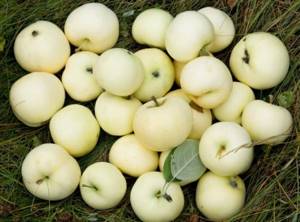
Light green apples of the “White Naliv” variety ripen in early August, sour “Papirovka” - around the same time, ruddy “Melba” and juicy “Apple Spas” - closer to the middle of the month. In the second half of August, Apple Savior is traditionally celebrated - the time of the first harvest of a new apple harvest. At this time, we treat ourselves to apples of different varieties. The most delicious are “Geneva” (fine-grained pulp has a very pleasant taste and aroma, apples are sweet and sour, juicy, crispy), dark red “Prima” (tender flesh and a sweet, slightly pleasant sour taste), hypoallergenic “White Naliv” (the taste combines sweetness and slight sourness). “Antonovka”, “Belyi naliv”, these fresh varieties are leaders in the content of vitamins and nutrients. And it is in the last month of summer that the price of delicious, natural apples drops like never before. Did you know that one apple contains about 18% of your daily iron requirement? As the British say: “One apple a day and you don’t need a doctor!”
Grape
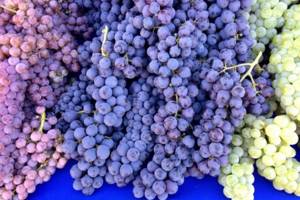
The first harvest of both black and green grapes begins at the end of July, but only at the beginning of the last month of summer do delicious varieties of this berry appear in our markets. At first it is brought mainly from Turkey and Uzbekistan, in the next three months you can eat it for pleasure, because it is inexpensive and sweet, when choosing you need to pay attention to the branches - they should be fresh and green, and the clusters should not fall off when you pick them up. The varieties “kishmish”, “lady fingers”, “taifi” are brought from Uzbekistan, and sweet black grapes are brought from Moldova. As a rule, the good taste of Uzbek and Moldavian grapes lasts until late autumn. Some people are afraid to eat grapes because of the high sugar content, but in vain! Grapes, in the absence of contraindications, have an extremely positive effect on the entire body. In addition to electrolytes, acids, vitamins and minerals, it contains a powerful antioxidant that strengthens the cardiovascular system.
Figs
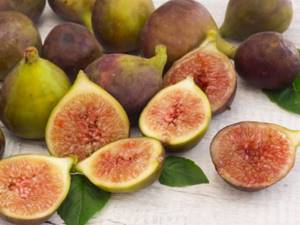
August is, of course, fig season. The first deliveries are received by plane from Israel, then from Crimea, from there the figs come already sweet, then there will be a lot of them from Armenia and Turkey, Azerbaijan (Chapla variety). Crimean figs come in two types: purple and white. The former is more common, but the latter is actually much sweeter and tastier, so go for it. When purchasing, make sure that the figs are dry and without cracks. Spoiled fruit has a characteristic feature - a salty smell. Figs contribute to: rapid recovery from illness; improving digestive processes; stimulation of the cardiovascular system; correct liver function; expectoration when coughing; curing tonsillitis.
Gooseberry
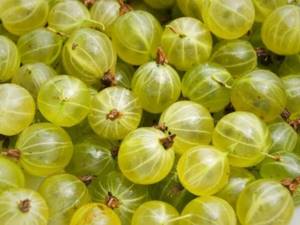
Stock up on gooseberries from the Moscow region—the “beryl” variety with very large berries (some the size of a good cherry) will be one of the first to appear. The berries of this variety are round, light green, sweet and sour. The most beautiful and fragrant variety is “Ural pink” with thin skin and a pinkish-orange tint. Fruits contain vitamins, minerals, acids and other substances that help the body resist germs and viruses, lose weight, boost immunity, and support vital functions.
Melon
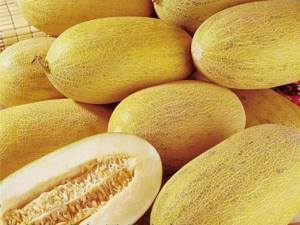
These southern beauties are the biggest hit of August. At the end of summer, Uzbek melons are brought to the market, very juicy, aromatic and surprisingly sweet. A ripe fruit must have a strong, sweet and tasty aroma and make a dull sound when slapped. The melon tail should be dry, but not wilted. By the way, melon goes well with almost all fruits and berries.
Cowberry
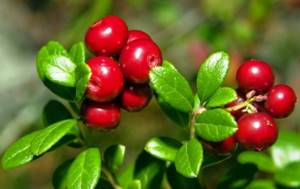
In the second half of August, the harvest of wild lingonberries begins. Freshly picked berries come to us mainly from the Voronezh, Vladimir, and Kaluga regions. By regularly consuming lingonberries, you can cure various inflammatory processes. Lingonberry is an excellent antioxidant and antiseptic.
Cherry
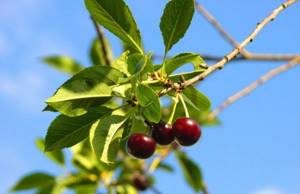
One of the traditional Russian berries comes mainly from Russian orchards, but there is also a share of imports.
What sets cherries apart from other fruits and berries is their high level of antioxidants and organic acids. They strengthen the body and promote regeneration processes.
Chanterelles
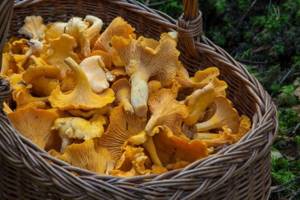
If you are already bored with the fruit and vegetable theme, we hasten to please you: August is the season of fresh forest chanterelles.
They come to the capital from the Kostroma, Ryazan and Vladimir regions. In addition to chanterelles, towards the end of the month you can safely buy boletus and aspen mushrooms.
Chanterelles are very tasty and healthy mushrooms, from which you can prepare not only independent dishes, but also salt, pickle and even dry them.
Bon appetit and good health to you!
Fruits and vegetables in July

July corn
Some fruits and vegetables in June are available and tasty in July, but the list is expanding. The first corn appears - the best breakfast, dinner or side dish. Much lower in calories than winter pasta and potatoes.
July mushrooms
Chanterelles! Don't miss them. It's time to pickle a couple of jars of chanterelles for the winter, fry them or add them to a salad.

July apricots and peaches
They are awaited no less than the first strawberry. The best variety of apricots is Shalah , we recommend it. But nectarines and flat apricots are better to wait another two or three weeks.
Keep watching the shelves, melons and watermelons are about to appear! Zucchini is already showing off on the shelves. Continue adding greens and turnips to your salads.
If June is the richest month in vitamins, then August is endlessly generous. If you try all the vegetables and fruits from the list below, you will have enough for the whole winter! And no vitamin complexes are needed.
How to eat fruits in summer: 4 main recommendations from a nutritionist
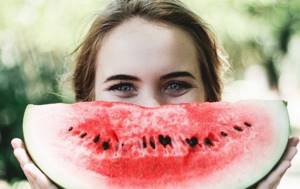
Author: Olga Turchanikova
Send news to a friend
Thank you, your message has been sent!
A nutrition and Ayurveda specialist spoke about the pitfalls of eating fruits
Summer is the time for fruits and berries, and many nutritionists advise leaning on them during this period, “stocking up on vitamins.” But it turns out that a menu that mostly consists of raw fruits and vegetables is not as healthy as it seems at first glance. According to the ancient science of Ayurveda, fruits and vegetables are raw, cold, and light in nature. They are very useful for the body and stimulate its activity, but if too much, they reduce Agni - the power of the digestive fire. Which in turn can lead to poor nutrient absorption and other health problems.

Nutritionists advise eating fruits wisely (photo: unsplash.com)
Nutrition specialist (Higher School of Tibetan Medicine, ITAM) and Ayurveda Valentina Ivushkina is sure that you should not overdo it with fruits. Since the abundance of cold “hits” the pancreas and stomach. Also, in her opinion, it is precisely because of an excess of raw food in the summer and autumn that people often experience exacerbation of gastric diseases, including gastritis and pancreatitis.
- Losing weight with humor: 10 “bad tips” from a nutritionist
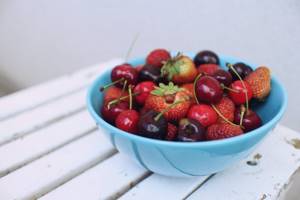
You need to stock up on vitamins wisely (photo: unsplash.com)
To get the maximum benefit from fruits, Valentina advises following these simple rules:
- In the morning, try to avoid raw fruits, juices and smoothies. The first breakfast should be thermally processed and consist of non-mucosal foods: this is important for the digestive, genitourinary, hormonal and immune systems. And non-mucus fruits, including pomegranate, apple and berries, can be saved for second breakfast.
- Before lunch, sweet-tasting fruits, which include banana, watermelon and pear, are very useful. But it is important to consume them at least 30 minutes before meals. In this way, bloating and the formation of toxins can be avoided.
- During the Wind (from 2:00 to 6:00 and from 14:00 to 18:00), heavy and nutritious fruits, such as banana, are useful.
- In the evening you can also eat some fruit - but before dinner.
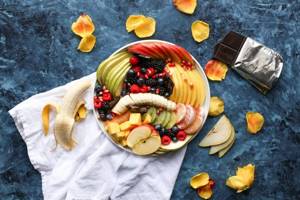
The correct combination and alternation of products is the key to the proper functioning of the body (photo: unsplash.com)
- What to eat and drink in the heat: a nutritionist gave examples of a summer menu
Valentina also advises listening to yourself and not forgetting that thermally processed food is very important in the summer. Soups, stews, broths, meat, stewed vegetables and casseroles will benefit the body. It is quite possible that on a hot evening you will only want fruit. But sometimes banal thirst leads to this. First, drink some water and you will be able to understand what your body really requires. Try to maintain a balance between warm and cold foods.
Fruits and vegetables in August

August eggplants
Corn, melon and peaches are still in high esteem, but the eggplant season is just beginning. this low-calorie , tasty and very filling vegetable to every dish! The calorie content is only 25 kcal , and it would be a good idea to dedicate an entire article to a story about their benefits.
August watermelons
It's a great time when watermelons are sold on every corner. This juicy berry is best enjoyed eaten plain or added to fruit salads.
August grapes
Of course, this is not a very healthy berry for your figure. It contains a lot of sugar, more than other fruits. And yet, eating a handful of grapes is better than a piece of cake. Red grapes are especially useful. For winemakers, August is a special month.

August green beans
You can add it to salads starting in August, and for the winter it is best to freeze or pickle it.
And although peaches and apricots start growing in July, they are at their peak in August. Raspberry season continues , with plums, figs, summer squash, broccoli and red peppers appearing in abundance.

Over the summer, you definitely need to eat up on fresh fruits and vegetables . During this period, our body relies on vitamin replenishment. Replace most of the side dishes with salads, combine greens with protein foods in a ratio of 50 to 50 or even 70 to 30. Save our cheat sheet for the future!
The benefits of our usual summer fruits
There is an opinion that the most beneficial fruits for a person are those that grow in the place where he lives. In Russia, the most common fruit is the apple. This product is wonderful because it has many varieties, and those who do not like sour apples can choose sweet ones, and vice versa. In addition to their excellent taste, apples have great benefits. Those who love and regularly consume apples have excellent digestion and strong immunity.
Pears are no less popular and beloved in Russia. This sweet fruit has an anti-inflammatory effect on the human body and can also perfectly fight depression by improving mood. Pears should be chosen as a healthy dessert; they are not recommended on an empty stomach due to their difficult digestibility.
In the summer you should definitely have time to enjoy peaches and apricots. These sweet fruits promote good intestinal and liver function and help remove swelling. They also have the excellent property of preserving the youth and beauty of the skin, and are also recommended as a dietary product.
